BUGS!
(Courtesy SA BEST)
Teams are tasked with recovering valuable genetically altered bugs that have escaped from a laboratory. The bugs (flies, cockroaches and termites) have primarily congregated near a shed in the center of the field and should be taken to containment areas located near their perimeter of the field. The containment areas have been partially blocked by various construction materials which make it difficult to reach the containment area. Below is an overview of the field. Teams may drive their machines anywhere on the field (as long as they don't interfere or block other teams). The machine starting spot and driver and spotter areas for the red are marked on the field below.
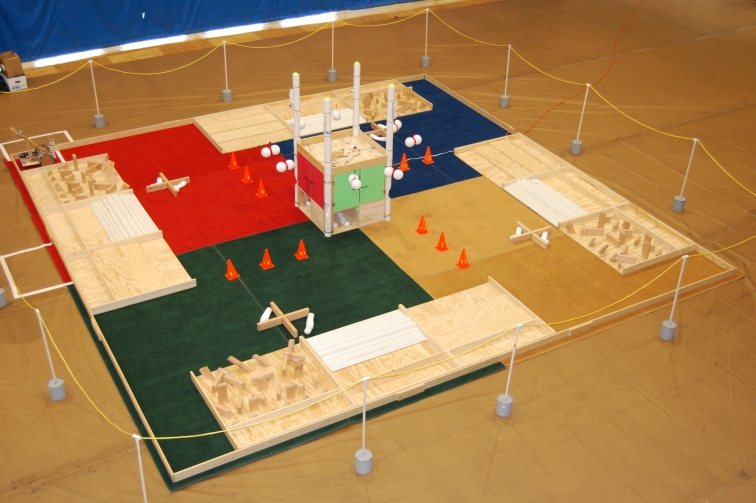
Each team has its own three containment areas (the box areas nearest the field perimeter) into which the game pieces and food must be placed to score. Details of the obstacles in front of the containment areas are shown in the pictures below, as are views of the shed near the center of the field.
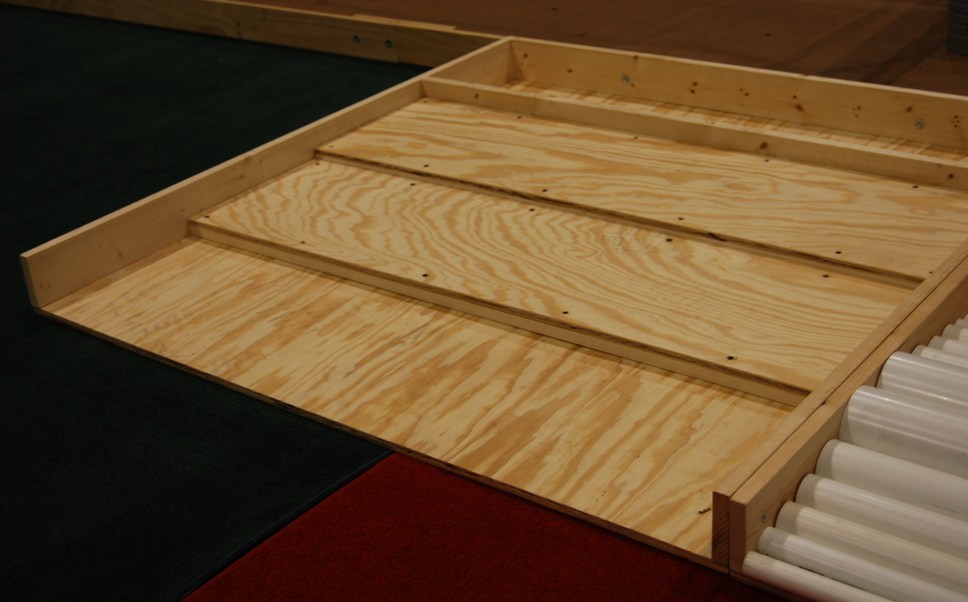 |
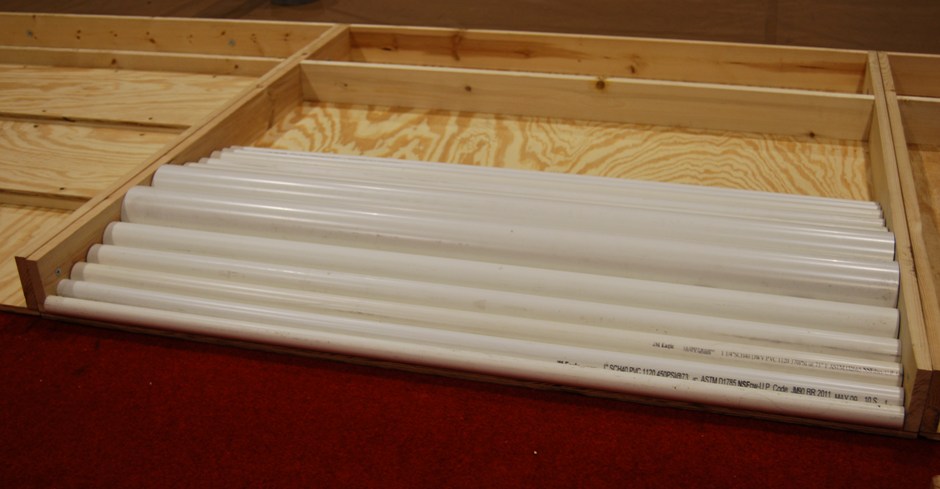 Containment area blocked by pipes - Pipe Containment Area (PCA). The pipes are free to rotate, but will not move otherwise |
| Containment area blocked by wood planks (Stepped Containment Area - SCA) . |
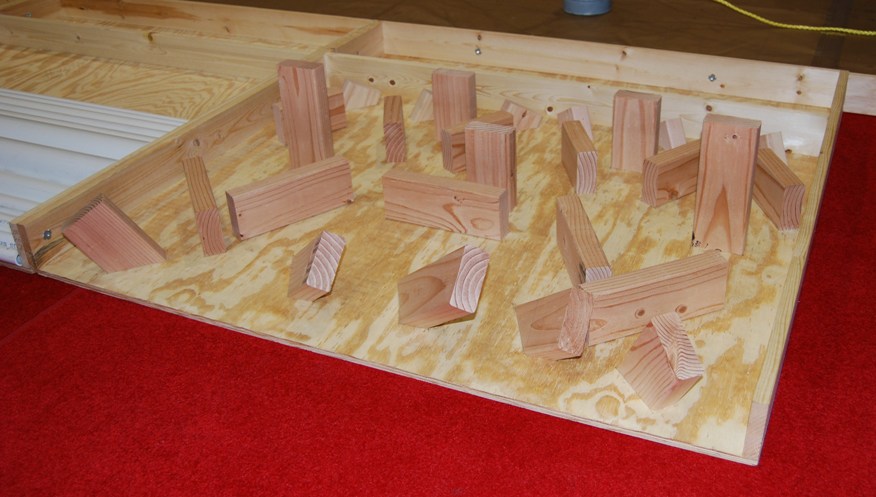 |
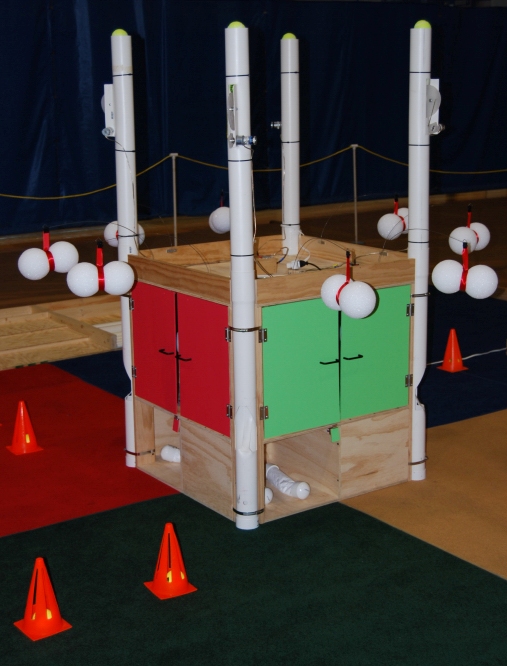 |
Containment area blocked by wood pieces (that are attached to the floor board). |
|
 |
|
Inside the shed is where the cockroaches and moving flies are located.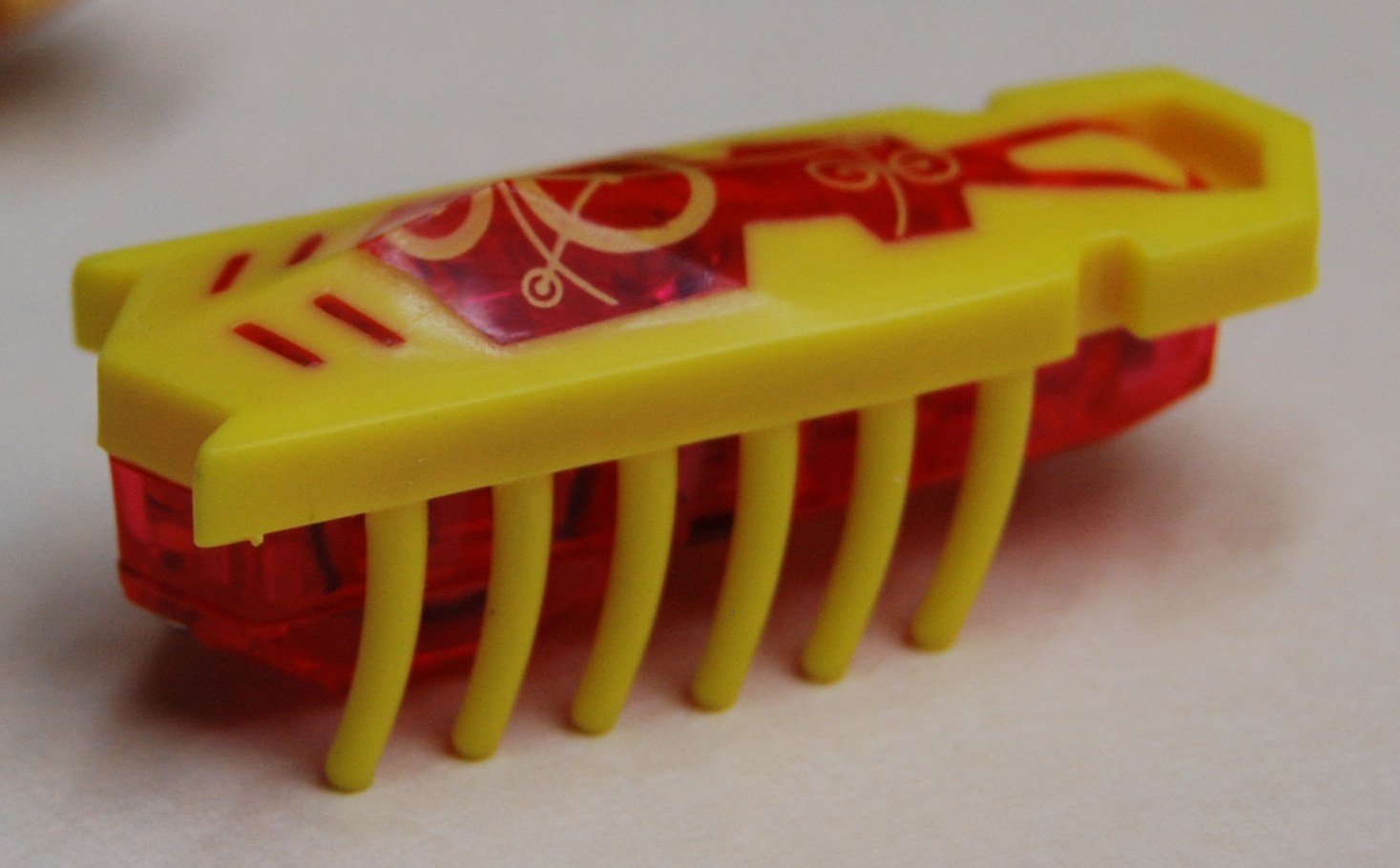 |
The shed has doors on each side for access. Termites are located in the open areas below the doors, while flies are also located around the shed. Food dispensers are located at each corner and activated by pressing (and holding) a button in the open area below the doors. Food is also located beneath the construction cones. |
The flies, which are represented by two 5-inch Styrofoam balls glued together, are visible around and inside the shed area. in the picture above. Other game pieces are food represented by tennis balls, cockroaches represented by Hexbug nanos (picture below), and termites which are roughly 14-inch long, Tyvek fabric tubes with 2-inch PVC pipe caps and filled with 1 pound of beans. The termites are visible in the picture of the shed (above). The total number of game pieces, their location and their value are listed in the table below.
|
|||||||||||||||||||||||||||||
Scoring is based on the position of the game piece at the end of the match. The point value for a game piece is multiplied depending on the containment area into which it has been deposited as shown in the table below. In addition, there are bonus points awarded for accomplishing other goals related to recovering the bugs.
|
|||||||||
|
|||||||||
Restrictions for the game play include:
- Robots (and game pieces) cannot cross the edges of the containment areas. Entry must occur along edge that faces the center of the field.
- Game pieces do not score if contained in the robot, detached assemblies, or other game components other than game pieces.
- Game pieces cannot be pierced, damaged, or launched.
- Game pieces cannot be taken from a team once that team possesses the piece.
- Teams may not interfere with other teams.
- Velcro can not be used to attach to game pieces.
The contest is comprised of three phases: a partial round robin seeding competition, a six game round robin semi-final between the top eight teams, and a three game round robin final between the top four teams. The team’s accumulated score during the seeding competition will be used to rank the team and to determine seven of the eight teams that will advance to the semi-final round robin playoff. The eighth team for the semi-finals will be the winner of a single “wildcard” game. The participants for the wildcard game are selected based on the score of their engineering notebook.
At the start of the semi-finals, the scores will be reset to zero. For the semi-final round robin playoff, the top eight teams will each play three matches. The total of each team’s scores for these three matches will determine which four teams advance to the finals. At the start of the final competition, total scores will again be reset to zero. The top four teams will play three additional matches to determine the final ranking order.

 Announcements
Announcements










